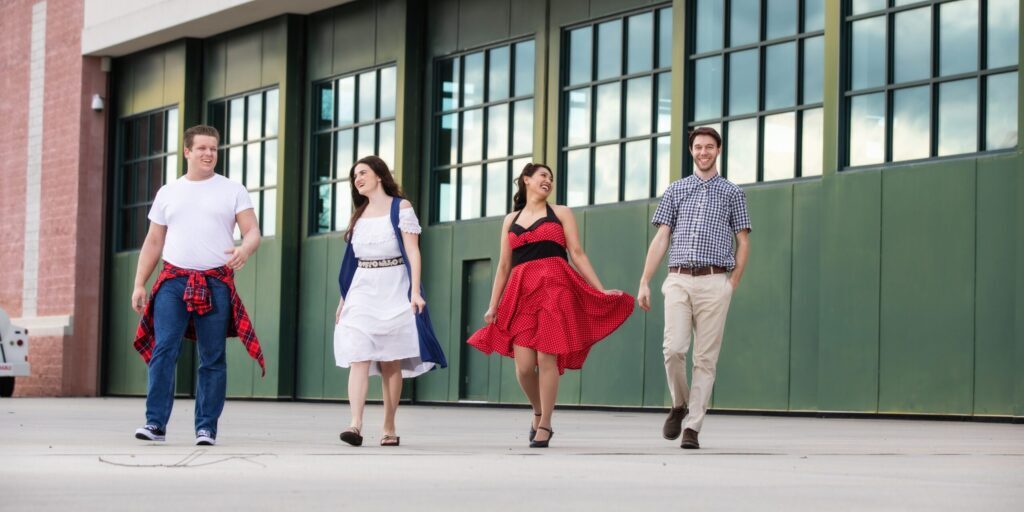
Doorway Salutes and Its Tribute to the USO: Part 2
By Bryce Collins
Welcome back, fellow enthusiasts of music and blogs, to Doorway Salutes and Its Tribute to the USO! I hope you enjoyed the first part of this Doorway History blog, where I touched on the origins of our Salutes program and my personal stories of joining Doorway and performing the Salutes show itself. In this second segment, we’re going to dig into the Salutes set itself, analyzing the historical context of the music and how it connects to American history and the impactful work of the USO.
From The Top…
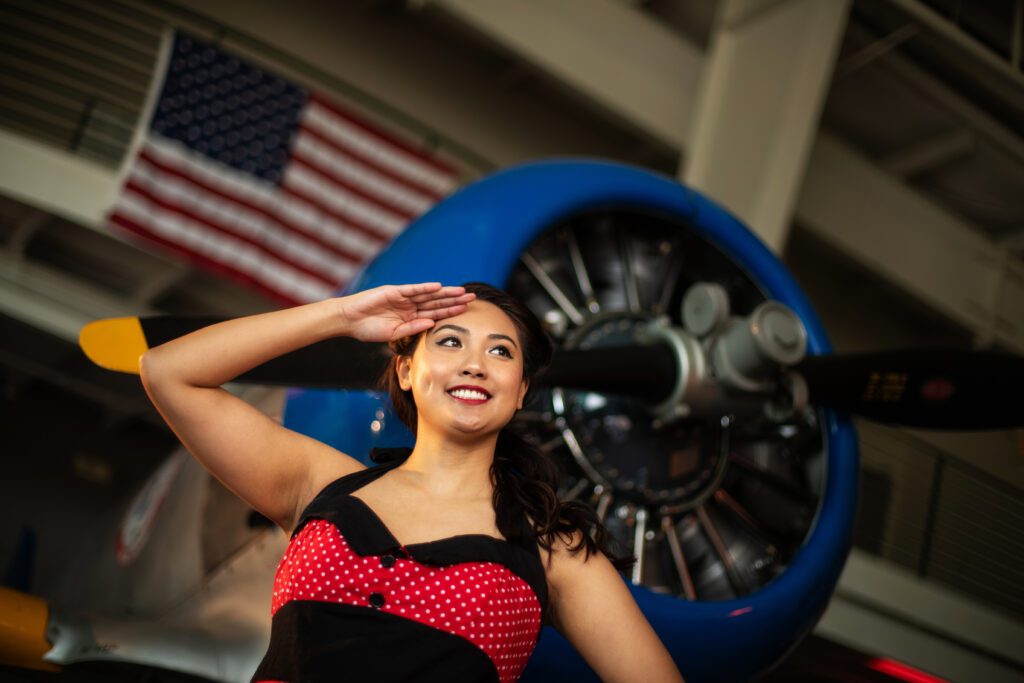
Whenever we perform the Salutes program, we always open with a song that celebrates American patriotism. Depending on whether an American flag is present or not, we sing either “The Star Spangled Banner” or “God Bless America”.
“The Star Spangled Banner” has been the National Anthem for the United States since 1931. Its lyrics were written by Francis Scott Key, who witnessed a British naval bombardment of Fort McHenry during the Battle of Baltimore in the War of 1812. The anthem’s title was penned after Key had seen the American flag still waving strongly after the battle’s conclusion. This same flag of 15 stars and stripes can still be found in Washington D.C. at the Smithsonian Museum of American History. Another fun fact about our National Anthem is that it’s considered to be one of the hardest songs for the human voice to sing.
“God Bless America” was written in 1918 by Irving Berlin, a pioneering composer of the Great American Songbook. Originally titled, ‘Thanks America’, Berlin wrote the song for the finale of Yip, Yip, Yaphank; however, he decided to save it for the right occasion, and instead wrote ‘In the Y.M.C.A.’. It wasn’t until the 1938 London premiere of Alexander’s Ragtime Band that the song returned to Berlin’s mind. Berlin mentioned that the 1918 version was a “song of war”, but now 20 years later, he rewrote it as a “song of peace”. The song became a deeply appreciated song by American audiences when it was first performed by Kate Smith on her radio show on Armistice Day of 1938. (1)
World War II (1939-1945)

On February 4, 1941, the United Service Organizations was founded under the request of President Franklin Delano Roosevelt in the hopes of boosting morale and optimism for soldiers away from home. The USO consisted of six private organizations, which included the Salvation Army, Young Men’s Christian Association, Young Women’s Christian Association, National Catholic Community Services, National Travelers Aid Association and the National Jewish Welfare Board. They were designed to be a “home away from home” for those serving overseas, especially later on in the European and Pacific theatres of World War II. Though the threat of the Axis powers was hanging over the U.S. like a thundercloud, America’s joining of the Allies didn’t occur until December 7, 1941, when Japanese kamikazes surprised-attacked the U.S. naval base at Pearl Harbor in Hawaii.

We kick off our World War II section with Fats Waller’s aptly-named “The Joint is Jumpin’”. It segues immediately into Glenn Miller’s 1939 swing classic “Gettin’ In The Mood”. Doorway performs The Brian Setzer Orchestra version, as it was played on their 2000 album Vavoom! Brian Setzer is also known as the frontman and co-founder of the American rockabilly group The Stray Cats. These two songs are meant to capture the recreational atmosphere of the USO centers. The centers occupied all kinds of buildings or facilities that provided safety for the soldiers, from the dignified institutions of churches, museums, and castles, to the humble abodes of railroad cars and barnhouses. (2) At these centers, warm home cooked meals and non-alcoholic refreshments were served, and the soldiers could free themselves of the stressful service through entertainment, such as dancing, music listening, games and movie nights, and relaxing activities, like taking naps, writing letters, and seeking religious counsel. (3)
As mentioned before, the USO was formed not only for the optimistic relief of the soldiers, but boosting their morale and nobility as American soldiers. According to present-day historians and military leaders of the time, increasing concerns of morale boost go back to the end of World War I in 1918, due to the ongoing activities of alcohol use, prostitution, and disease. (4) Most of the USO volunteers consisted of married women, which the soldiers were delighted by because they were being cared for in the company of women. “Moonglow”, a 1933 jazz standard by Will Hudson, Irving Mills, and Eddie DeLange, is the most romantic song in our set. In our quartet setting, the men and women are imagining themselves at a romantic spot (I personally think of the Virginia Beach Boardwalk), and they’re serenading and dancing with their partners about their romantic destiny and connection from the full moon’s “glow”.
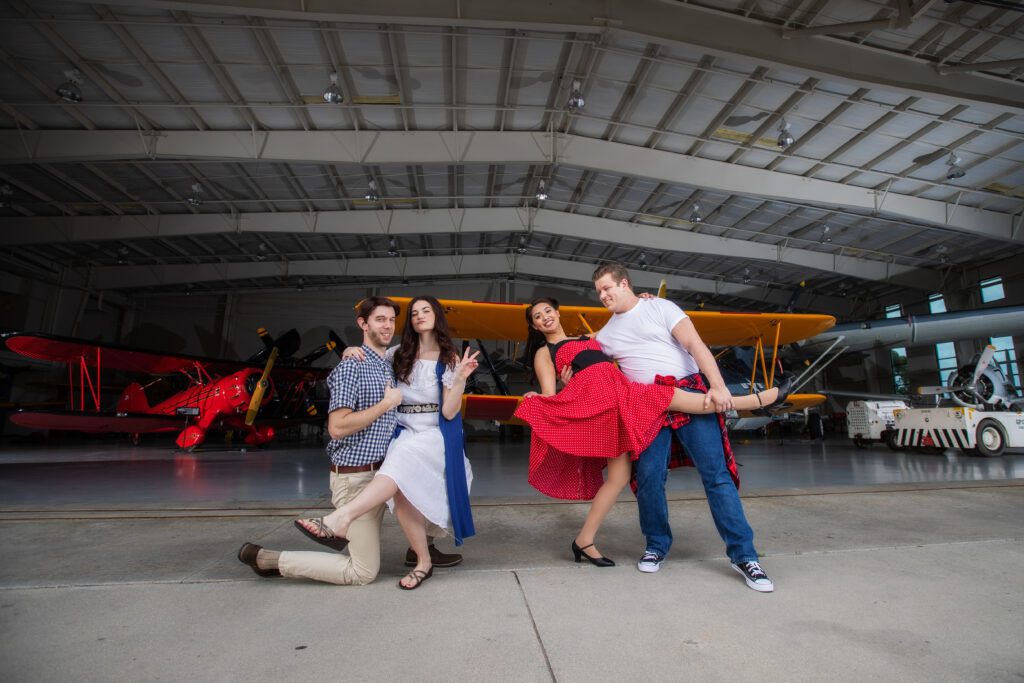
In October of 1941, the USO realized the importance of live entertainment for the soldiers and planned their first tour in the Caribbean. Performers included comedians Laurel and Hardy, Chico Marx and dancer/actress Mitzi Mayfair. This brings us to the “Camp Show” section of our Salutes show, consisting of songs by the Andrew Sisters and Bing Crosby, who were also regulars who took time out of their schedules to perform for the GIs. The songs “Boogie Woogie Bugle Boy” and “Don’t Sit Under the Apple Tree” have a sort of flirtatious, cutesy style where the women take the lead over the boys.
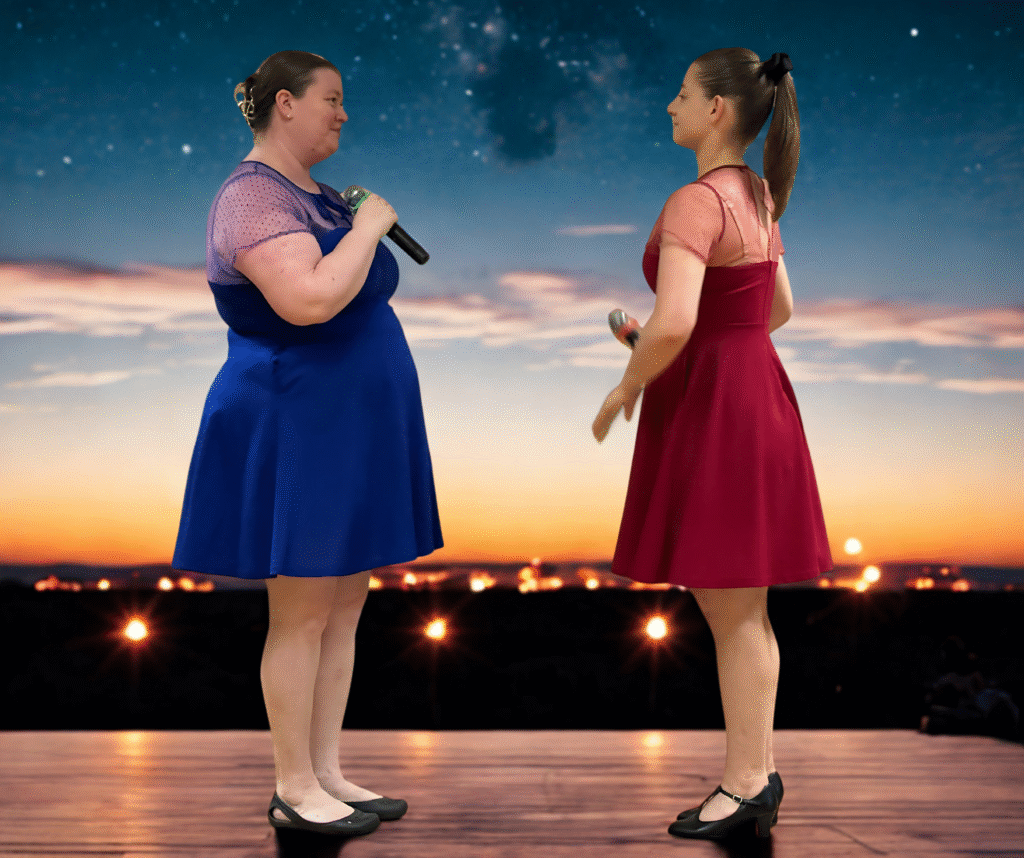
Most importantly, it captures how the connection between talented women, like the Andrew Sisters and Dinah Shore, and the soldiers was a refreshing reminder that they will get through this conflict together, from American to Americans. Some female performers, like Marlene Dietrich, even helped in serving the war effort, which included jobs as military medics and spies. Bing Crosby’s “I’ll Be Home for Christmas” and The Andrew Sisters’ “Chattanooga Choo Choo” represent the hope and excitement for the soldiers to return to their families. Soldiers of all American roots and backgrounds served in the war. In one part of our show, we touch on the story of Calvin Graham, who was only 12 years old during his one-year service before being discharged, which was just over half the average age of 26 for a World War II soldier.
This blog concludes the first half of the historical context of the music and the USO’s impact in American history. Stay tuned for Part 3, where we focus on the USO and its work throughout the Korean and Vietnam conflicts, as well as the present day.
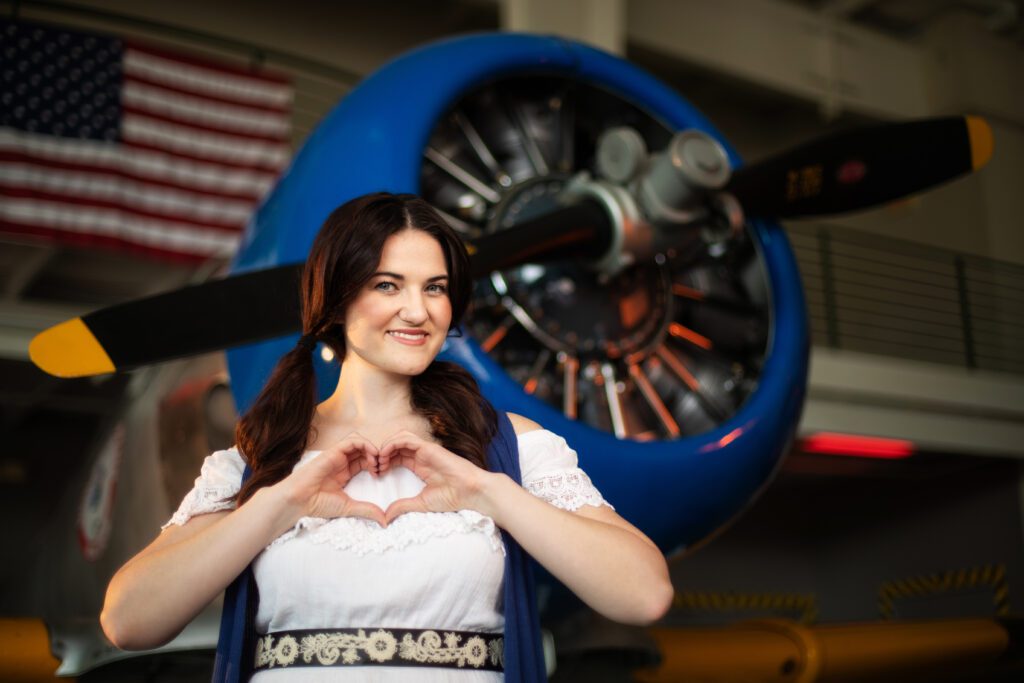
Resources
“God Bless America – Behind the Song.” Irving Berlin, n.d. https://www.irvingberlin.com/god-bless-america
Desimone, Danielle. “On Its 80th Anniversary, the USO Looks Back on Eight Decades of Standing by the U.S. Military’s Side.” United Service Organizations, February 3rd, 2021. https://www.uso.org/stories/2988-on-its-80th-anniversary-the-uso-looks-back-on-eight-decades-of-standing-by-the-us-military
“Today in History – February 4.” Library of Congress, n.d. https://www.loc.gov/item/today-in-history/february-04/
Pelusi, Christian. “The USO: An Icon Born of Necessity.” United Service Organizations, February 4th, 2016. https://www.uso.org/stories/148-the-uso-an-icon-born-of-necessity
Gohn, Sandi. “USO Camp Shows, D-Day and Entertaining Troops on the European Frontlines in WWII.” United Service Organizations, May 28th, 2024. https://www.uso.org/stories/2368-uso-camp-shows-d-day-and-entertaining-troops-on-the-european-front-lines-in-wwii